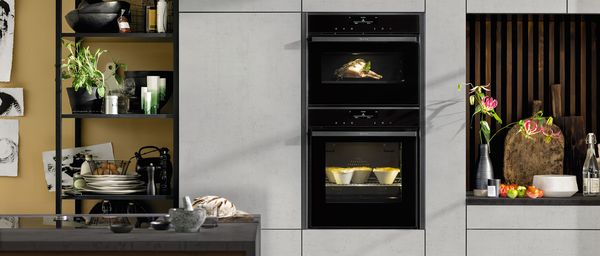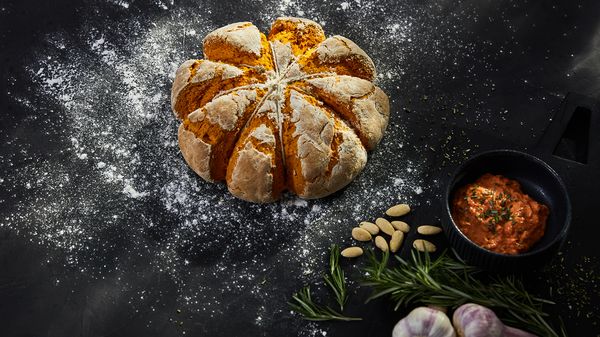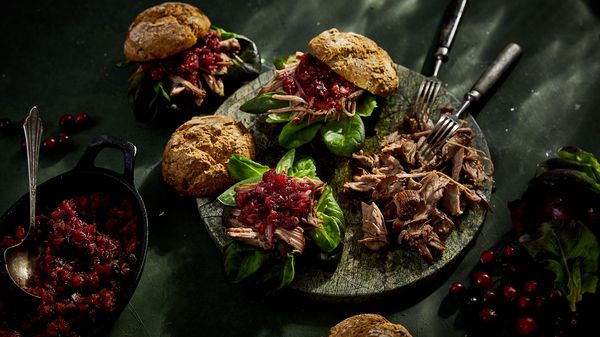Cooking in the oven isn’t only practical, but it even intensifies the aroma of the food, without any rush or a lot of effort. With just one baking tray or casserole dish, you can prepare numerous and varied dishes. Discover four delicious preparation techniques using the oven.

Cooking with hot air
Turbulent, but very versatile: with the particularly smart CircoTherm® system, the air is heated directly in the fan’s circular heating element and then distributed evenly and extra quickly around the oven cavity. This technology means that lower temperatures are needed to cook food than with the ‘top/bottom heat’ setting. Yet that is not the only reason why this preparation technique is considered to be very energy-efficient. That’s because the circulating hot air makes it possible to heat or cook up to four dishes on different shelves without the flavours mixing with one another. Another side effect is that the hot air dries out surfaces more quickly. As a result, a marbled cut of pork neck, goose or leg of venison very quickly gets an aromatic crust, while staying succulent in the centre. This is not the only reason why people like to combine this preparation method with other cooking methods, such as steaming, sous vide and grilling.
Baking with top and bottom heat
If the scent of fresh cake is wafting around the kitchen, your oven is almost certainly on the ‘top/bottom heat’ setting. This preparation technique is ideal for baking, roasting and braising, because the food is evenly heated from above and below, keeping the inside succulent, while creating a crisp outer surface. The intensity of the heat can be precisely controlled depending on which shelf the food is placed on in the oven. Tip: Ovens with a special bread-baking setting provide the ideal temperature and conditions at the touch of a button for bread, baguettes and rolls.
Steaming in the oven
If ingredients cook in their own juices up to temperatures of around 100°C, the results are not just especially aromatic, but also light and wholesome. Steaming is the ideal preparation method for many different foods. Vegetables, potatoes, rice, stuffed pasta, fish, shellfish, poultry and fruit cook in the hot steam with little effort. It is important to remember that if you want to steam food in the oven, you will need some kind of ‘packaging’ for it, such as parchment paper, aluminium foil or even vegetable leaves. An oven with a steaming function is even more versatile. There are models with full steaming, such as the NEFF FullSteam oven, or with steam-assisted cooking, such as the NEFF VarioSteam oven. Whether full steam or steam boost, both functions can be combined with other preparation methods (see recipe for gratin shellfish). Equally practical: Steaming is also ideal for leftovers, because the ingredients from the previous day are gently heated without drying out when the food is warmed up in the moist heat.
Grilling and cooking au gratin
Crisp and golden brown with intense flavour – when strong radiant heat is used on meat, cheese and Co and the timing is right, then the results are generally a feast for the senses. As such, it is good to know that you can spontaneously grill food in the oven in next to no time, irrespective of the season or weather. It is important to remember that while thin slices of meat, burger patties and vegetables cook very quickly in the upper quarter of the oven, larger joints, knuckles and legs should be pre-cooked using a gentle preparation method such as steaming, sous vide or braising before switching to the grill function shortly before the end of the cooking time for a hot finish. Tip: In contrast to the charcoal grill, the heat from the grill heating element comes from above, which means that dishes can be cooked au gratin and desserts can be caramelised in a matter of minutes.




